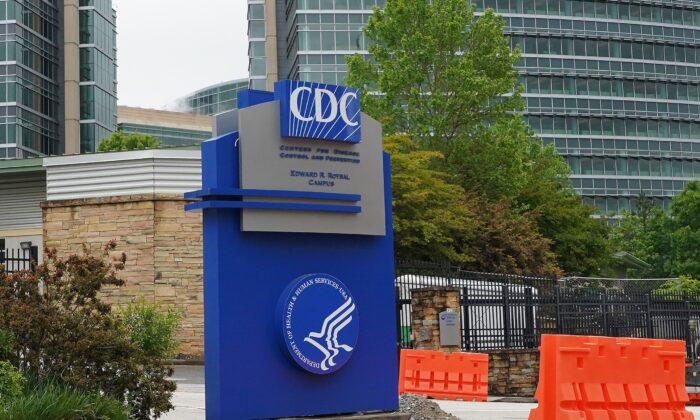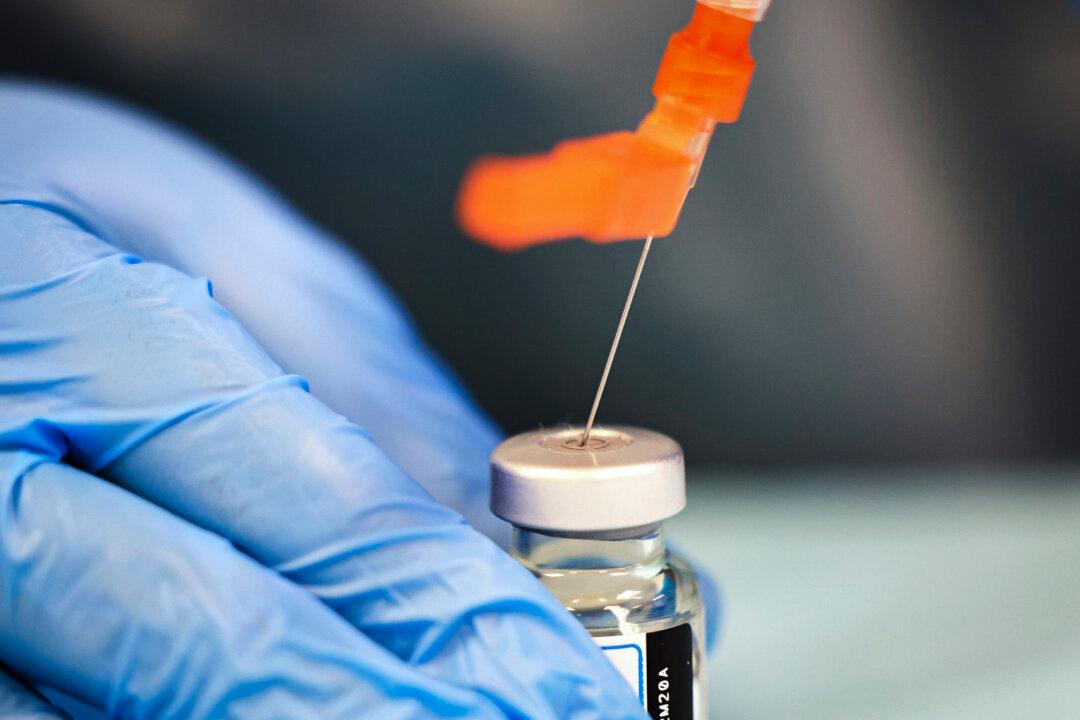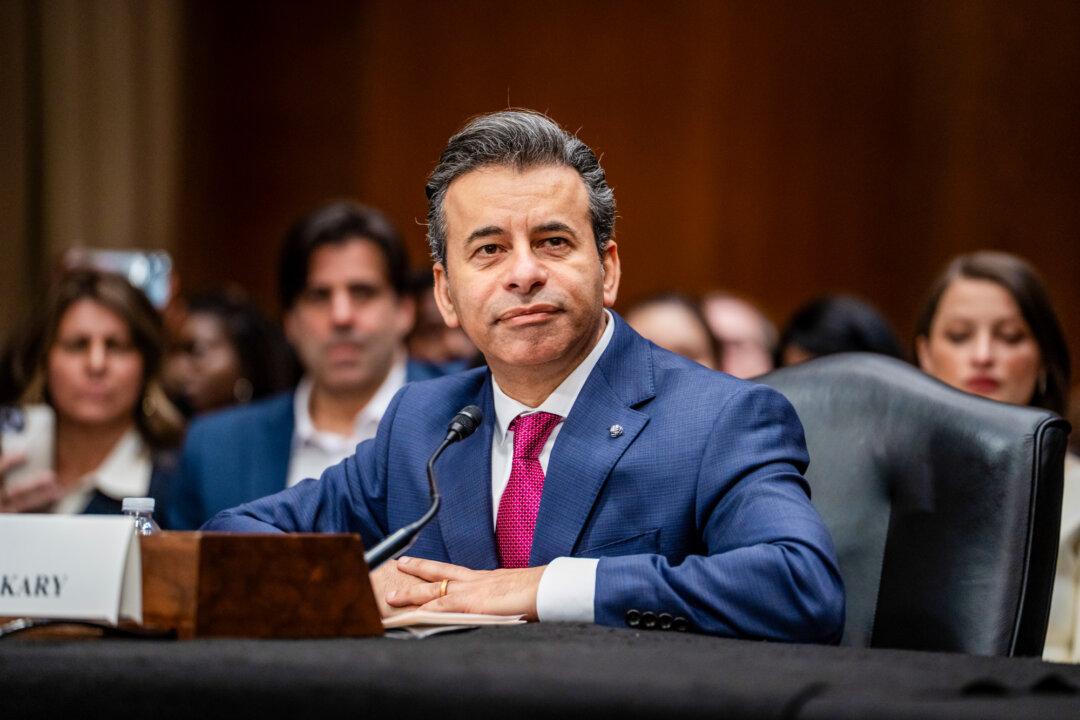The U.S. Centers for Disease Control and Prevention (CDC) removed data on guns from its website after holding a private meeting with gun control activists, according to newly disclosed emails.
The page now reads: “Estimates of defensive gun use vary depending on the questions asked, populations studied, timeframe, and other factors related to study design. Given the wide variability in estimates, additional research is necessary to understand defensive gun use prevalence, frequency, circumstances, and outcomes.”
The change happened because of pressure from activists, the emails show.
Several weeks after the page was published in 2021, Devin Hughes, president and founder of GVPedia, emailed the CDC expressing concern about the 2.5 million estimate.
Hughes said the figure stemmed from surveys that have “fatal flaws” and that the figure comes from a report that was published in 2013, before the Gun Violence Archive began providing data. That archive only estimates about 2,000 defensive gun use instances per year. He urged the CDC to “revisit and update” the defensive gun use portion of the webpage.
Hughes apparently didn’t receive a response, so he forwarded his message to Po Murray, chairwoman of the Newtown Action Alliance. Murray sent the message to White House officials.
Hannah Bristol, with the White House Office of Public Engagement, answered after consulting with the CDC.
“CDC reviewed many studies for the estimates used for this range in the fact sheet and an update is not warranted at this time,” Bristol said.
Internally, Linda Dahlberg with the CDC also said the criticism didn’t hold weight.
“We stand behind our fact sheet, which essentially points out that estimates of defensive gun use vary depending on the data source, questions asked, populations studied, timeframes, and other factors related to the design of studies," Dahlberg said.
She listed 13 data sources.
Hughes responded by saying that he disagreed that the Gun Violence Archive only represents a small subset of people who used guns defensively.
“I would strongly urge the CDC to consider revising the factsheet to add further context, or at the very least removing the DGU section until better data emerges,” he wrote. “I would be more than happy to meet virtually to further discuss the research surrounding DGUs and how best to correct the misinformation in the Factsheet.”
That led to a meeting involving Hughes; Murray; Mark Bryant, executive director of the Gun Violence Archive; and three top CDC officials: Dr. Deb Houry, the CDC’s acting principal deputy director; Thomas Simon, associate director of science for the CDC’s Division of Violence Prevention; and Elizabeth Reimels, associate director for policy, partnerships, and strategic communication at the division.
The meeting took place on Sept. 15, 2021, and lasted about 30 minutes.

Emails After the Meeting
Exactly what unfolded in the meeting isn’t clear. But emails afterward indicate that the activists made their case.“Thank you for taking the time to meet with us. We deeply appreciate it,” Hughes wrote afterward.
He said he showed slides during the meeting that detailed problems with the defensive gun use estimate, particularly the estimate of up to 2.5 million uses per year. The slides weren’t included in the documents, some of which were redacted.
Hughes also said he hoped that “this is the beginning of the conversation.”
“Thank you for sharing this,” Simon responded. “We also appreciate the opportunity to talk with you, Po, and Mark and the time that you put into the summary you provided.”
Kleck, a professor emeritus at Florida State University’s College of Criminology & Criminal Justice, is behind the 2.5 million figure.
He told The Epoch Times via email that he has “systematically rebutted every single criticism” of the higher defensive gun use (DGU) estimates, pointing to the op-ed, and said that “critics have simply ignored the rebuttals.”
“Virtually all flaws in surveys known to scholars work to produce underestimates of the frequency of crime-related experiences, so the notion that DGU is overestimated at all, never mind grossly overestimated, is wildly out of line with scholarly knowledge of survey research,” Kleck said.
A CDC spokesperson told The Epoch Times via email: “Science leads all CDC decisions. Our goal is to present the science and the data objectively and in language that is easy to understand.”
The CDC stated that it came to determine that the initially listed range of DGUs was “not easily understandable and may be outdated.”
“CDC removed both numbers—the low and high estimates—from the fact sheet and acknowledged that additional research is necessary to understand defensive gun use prevalence, frequency, circumstances, and outcomes,” the spokesperson said. “CDC does not advocate for or against gun policies. CDC engages with a wide variety of partners every day. It is not unusual for partners to be connected to the agency through members of Congress or the White House. In the past year alone, CDC has met with a number of organizations interested in the topic of firearm injury and violence prevention—including gun rights organizations, gun violence prevention organizations, public health organizations, and medical societies.”
The FOIA request asked for all documents relating to the CDC’s decision to edit the gun fast facts page. None of the documents that were returned showed any meetings or discussion with gun rights groups or anybody outside of the gun control activists.
Houry and Simon didn’t respond by press time to requests by The Epoch Times for comment. Reimels declined to comment.
Some CDC officials didn’t know why a change would be needed.
“I mean all we say on the fact sheet essentially is that you get different estimates of defensive gun use depending on the methods you use to measure it and then point to the National Academy report,” James Mercey, director of the Division of Violence Prevention, wrote to Reimels. “Hard to argue against that. What do you think the concern is with this? Or is it something else?”
Reimels later told Hughes, Bryant, and Murray that the CDC was planning to update the fact sheet in early 2022 “after the release of some new data.”
“We will also make some edits to the content we discussed that I think will address the concerns you and other partners have raised,” she said.
No reason was given publicly for the change.
Simon told a colleague in one of the newly disclosed emails that the CDC had “simplified the text” for defensive gun use, noting that the original text “provided an estimate” of the annual instances.
Activists
Hughes and Murray advocate for stricter gun laws.Both Hughes and GVPedia have promoted gun control legislation. The Newtown Action Alliance wants to ban so-called assault weapons, cut gun manufacturers off from insurance, and stop members of Congress from carrying guns on U.S. Capitol grounds.
“If you don’t support an assault weapons ban then you support arming mass shooters,” Murray said in a statement on social media.
Kleck told The Epoch Times that high DGU estimates don’t threaten “moderate gun control measures like background checks, which only restrict guns among small high-risk subsets of the population like convicted criminals.”
“High DGU estimates, on the other hand, would present serious problems for those who support prohibitionist measures that would disarm all or most civilians, since such estimates would imply serious costs to disarming all or most prospective crime victims,” he said.
Bryant says he and the Gun Violence Archive don’t advocate for stricter legislation. The archive states that its mission is “to document incidents of gun violence and gun crime nationally to provide independent, verified data to those who need to use it in their research, advocacy or writing.”
But Bryant described himself as part of the “GVP community” in his email to the CDC. GVP stands for gun violence prevention.
“Until proof [is] available, we in the GVP community respectfully request that this outlier that has been used so often to stop legislation be removed until a panel can build a fair survey which will better reflect the true status of the number of [DGUs],” he wrote.
“I had no specific legislation, federal or state, in mind when I talked about that,” Bryant told The Epoch Times via email. “It was a reference to blocking communications that advocates have with legislators. I am not part of those conversations, just observing them from our research group as some use our data.”
Bryant, a gun owner, said the gun violence protection community is made up of different sorts of people, including journalists and gun rights activists.
“What we asked of the CDC was regarding the use of statistics that could not be proven. We asked them to fund a study to come up with an accurate number or remove the inaccurate numbers as they were misleading. They chose to remove that sentence in the fast facts,” he said.





